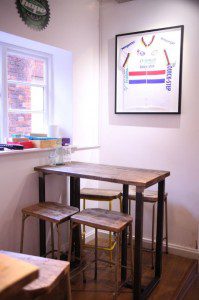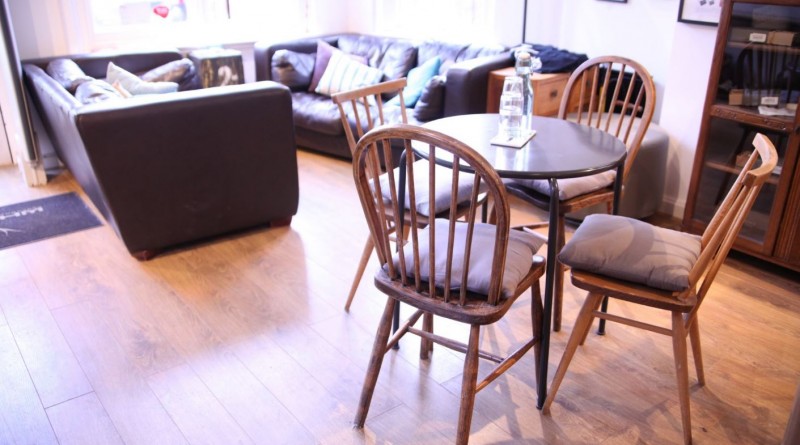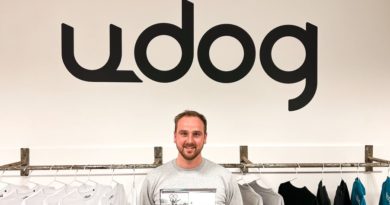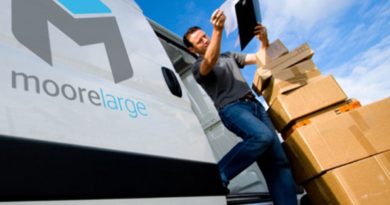Comment: Retail trends that can help your bike shop’s footfall and add on sales
By CyclingIndustry.News regular Jay Townley 
Bike shops are experiencing up front and personally the fact that no industry is changing more rapidly than retail. To help small retailers Small Business Trends gathered some predictions from two recent retail studies, “How We Shop Now,” and a report by TOBE presented at the National Retail Federation’s Big Show. These will not only give bike shops insight into upcoming retail trends, but will also connect to the Three Ways to Grow Your Retail Business!
U.S. Consumers Want to Rent! (Increasing the number of customers)
As evidenced by the sharing economy and businesses such as Uber and Airbnb, 15 percent of U.S. consumers are interested in renting products from stores. The most popular products people wanted to rent are exercise equipment (17 percent), consumer electronics (15 percent) and furniture (11 percent).
Bike shops aren’t in the furniture business – but bicycles are excellent exercise equipment and electronics are quickly growing as a bicycling accessory category.
The most common business rental model is a subscription program that lets customers rent and we also suggest a rent-to-buy variation of this model. Millennial consumers aged 25 to 34 are the most interested in this idea (35 percent). If you have merchandise that’s past its season, try renting it instead of putting it on clearance.
Classes and Clinics (Increase the number of customers and the number of transactions)
Nearly one-third (32 percent) of American consumers are interested in going to classes or lessons at stores. U.S. shoppers are most interested in health or fitness classes (29 percent), cooking classes (27 percent) and learning from experts (20 percent). In addition, 17 percent are interested in clubs that meet at retail stores.
This trend is perfect for bike shops! 29-percent of U.S. shoppers are most interested in health or fitness classes and 27-percent want to learn from experts.
Teaching a class about health and fitness associated with bicycling yourself, recruiting an employee, or a local expert to do so is a great way to attract new customers. Offer some type of “bundle” for purchases of (or renting) a bicycle bundled with a class to boost your sales. Or start a VIP club of your best customers and have monthly special events just for them. For instance, set aside one evening a month for your VIPs to come in and check out the new products and services your bike shop is offering.
Lifestyle Loyalty Programs (Increasing the number of transactions)
Consumers in the survey are interested in loyalty programs — but not the traditional loyalty programs we are used to. Consumers would like to be rewarded for making good life decisions.
For example, 23 percent would like to get rewards for recycling, 23 percent would like to be rewarded for exercising and 11 percent would like to be rewarded for volunteering for charity.
Bike shops can set-up recycling programs for bicycle related packaging and components and give awards or points for recycling. A significant 23 percent would like to be rewarded for exercising – which is a natural for bike shops to create a bicycling lifestyle awards program. 
Depending on your bike shop’s product and services mix, there are a number of ways to implement this new type of lifestyle loyalty programs in your store. For example, a bike shop with food or beverage services could give customers loyalty points for putting cans and bottles and recycling bins, or using fewer paper napkins.
A bike shop with an active ride program can give customers rewards for every mile they ride with the stores group and a bike shop with a triathlon trade can give rewards for every training mile a customer runs and rides.
Stimulate the Senses as Part of the Store Experience (Increasing the number of customers)
In an increasingly digital and screen-oriented world, consumers in the survey want to stimulate all five senses when they actually go out into a real store. Not surprisingly, vision and touch were rated as the most important senses in the store experience, but smell and sound also matter.
Differentiate your store from the online experience by focusing on appealing merchandising that encourages touching the products and background music that fits your store brand.
Make Everyone Comfortable (Increase the number of customers by being sticky)
Stressed-out consumers are looking for relaxation wherever they can find it — even in retail stores!
 Think about how you can incorporate simplicity, and making everyone that comes into your bike shop comfortable. Think about how you can incorporate shopper and customer comfort into your bike shops’ look, feel and design.
Think about how you can incorporate simplicity, and making everyone that comes into your bike shop comfortable. Think about how you can incorporate shopper and customer comfort into your bike shops’ look, feel and design.
Create an authentic ambiance for your bike shop. Than think about comfortable seating and places in your shop that allows your shoppers and customer to relax and enjoy your store’s ambiance.
Create Memories (Increase the number of transactions)
In today’s digital world, consumers are attracted to temporary retail experiences, such as pop-up shops or limited-edition product lines. At the same time, they also feel nostalgic about the pre-digital days, so retailers who can appeal to a retro sensibility in new ways will succeed.
For bike shops this can translate to offering retro-bicycle products and selling or acting as a clearing house for vintage bicycles that are refurbished, or which the shop can refurbish.
Share the Passion (Increase the number of customers and the number of transactions)
Authenticity, purpose and social consciousness are all hot buttons for shoppers right now. Consumers want to spend their money with businesses that share their passions. Make sure your marketing clarifies your business mission, and if you’re involved with charitable or other socially responsible organizations, get your customers involved too.
In addition to charity rides, bike shops have authentic and social conscious community opportunities by supporting and getting their customers involved. You can run in school and after-school bicycle programs for children and college students, repair and basic maintenance clinics in the community to get and keep more bicycles running on neighborhood streets and work with retired and seniors who don’t think they can ride a bicycle anymore.
Missed Jay’s last two-part column? Read up on the 3 ways to make your store more money and the figures stacked up here.



